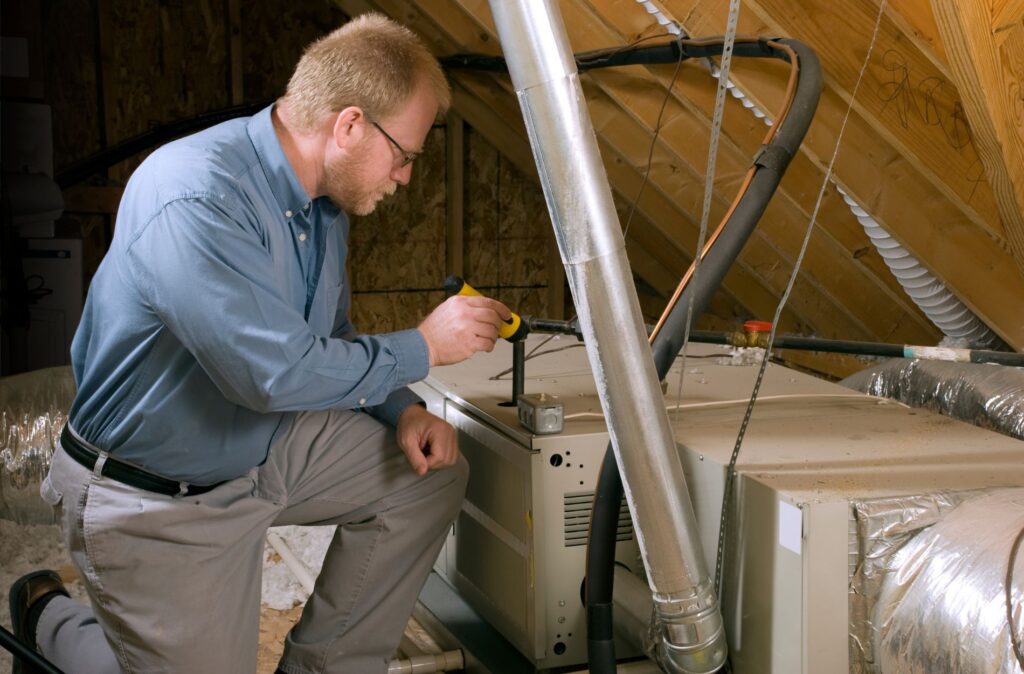A well-functioning furnace is essential to keep your home warm and comfortable, especially during the colder months. However, furnaces can encounter issues that disrupt their operation, such as problems with the pilot light or the ignition system. Addressing these issues promptly can prevent more significant repairs and ensure your furnace operates efficiently.
Common Causes of Pilot Light Issues
Pilot light issues in furnaces can stem from various sources. Understanding these causes helps in diagnosing and resolving the problem effectively.
1. Dirty Pilot Orifice: Over time, the pilot orifice may accumulate dirt and debris. This buildup can block the flow of gas to the pilot light, causing it to flicker or go out entirely. Cleaning the orifice with a small brush or compressed air can often remedy this issue.
2. Faulty Thermocouple: The thermocouple is a safety device that detects if the pilot light is lit. If it fails, the gas supply to the pilot light is cut off, causing the light to go out. A malfunctioning thermocouple may need realignment or replacement.
3. Drafts and Strong Air Currents: Drafts from open windows, doors, or vents can blow out the pilot light. Ensuring the area around the furnace is shielded from strong air currents can prevent this from occurring.
4. Gas Supply Issues: Inconsistent gas supply due to a partially closed or faulty gas valve can lead to pilot light problems. Checking the gas valve and ensuring it is fully open and functional is crucial.
5. Pilot Light Assembly Problems: Sometimes, the pilot light assembly itself can be defective. This includes issues with the mounting or alignment of the pilot light. Inspecting and adjusting the assembly can help resolve this problem.
By identifying the root cause of pilot light issues, you can take targeted actions to restore proper function. Regular maintenance and timely cleaning can prevent many common pilot light problems.
Troubleshooting Ignition Problems
Ignition problems can prevent your furnace from starting and heating your home. Identifying and addressing these issues quickly is essential for maintaining comfort and safety.
1. Check the Power Supply: Make sure the furnace has a steady power supply. Check the circuit breaker and fuse box to ensure there are no tripped breakers or blown fuses. Resetting the breaker or replacing a fuse might solve the problem.
2. Inspect the Igniter: The igniter is responsible for lighting the furnace burner. If it is cracked, worn out, or covered in debris, it may fail to ignite the gas. Inspect the igniter for any visible damage and clean it gently with a soft brush. Replace it if necessary.
3. Examine the Flame Sensor: The flame sensor confirms that the burner has successfully ignited. A dirty or malfunctioning flame sensor can prevent the furnace from starting. Clean the flame sensor with fine steel wool or a soft cloth and ensure it is properly positioned.
4. Verify the Gas Supply: Ensure that the gas valve is open and that there are no obstructions in the gas line. A disruption in the gas supply can prevent the furnace from igniting. If you suspect a gas supply issue, contact a professional for assistance.
5. Reset the Furnace: Sometimes, simply resetting the furnace can resolve ignition problems. Turn off the furnace, wait a few minutes, and then turn it back on. This can help reset the system and clear any minor faults.
6. Check for Error Codes: Modern furnaces often display error codes on a digital panel. Refer to your furnace’s manual to interpret these codes and diagnose the problem. This can help pinpoint the issue and guide further troubleshooting steps.
Addressing ignition problems involves careful inspection and cleaning of key components. Regular maintenance and timely repairs help ensure your furnace operates smoothly and efficiently.
How to Safely Relight a Pilot Light
Relighting a pilot light can be done safely if you follow the correct steps. Ensuring proper ventilation and using caution is crucial during this process.
1. Prepare the Area: Before you begin, ensure the area around the furnace is well-ventilated. Open windows or doors to allow fresh air to circulate. This helps disperse any gas that may have accumulated.
2. Turn Off the Gas: Locate the gas valve near the furnace and turn it to the “off” position. Wait at least five minutes to allow any residual gas to clear out. This step is crucial for preventing accidental ignition.
3. Access the Pilot Light: Find the pilot light assembly, which is usually located near the bottom of the furnace. You may need to remove an access panel to reach it. Refer to your furnace’s manual for specific instructions.
4. Light the Pilot: Turn the gas valve to the “pilot” position. Press and hold the reset button while using a long lighter or matchstick to ignite the pilot light. Keep the reset button pressed for a few seconds after the pilot light is lit to ensure it stays on.
5. Restore the Gas Supply: Once the pilot light is burning steadily, turn the gas valve back to the “on” position. This allows the main burner to ignite when the thermostat calls for heat.
6. Reassemble the Furnace: Replace any access panels you removed and make sure everything is securely in place. Double-check that the pilot light remains lit and the furnace operates correctly.
Relighting a pilot light requires caution and attention to detail. Following these steps helps ensure safety and restores your furnace’s functionality.
When to Call Our Team
While many furnace issues can be resolved with basic troubleshooting, some situations require professional attention. Knowing when to call us ensures your furnace receives expert care.
1. Persistent Pilot Light Problems: If your pilot light keeps going out despite cleaning and relighting, there may be underlying issues like a faulty thermocouple or gas valve problems. Our professionals can diagnose and repair these issues accurately.
2. Ignition Issues: Repeated ignition failures can indicate problems with the igniter or flame sensor. Our technicians have the expertise to handle complex ignition issues, ensuring your furnace operates reliably.
3. Strange Noises or Smells: Unusual noises or odors coming from your furnace can signal serious problems. Rattling, banging, or the smell of gas requires immediate professional attention to avoid potential hazards.
4. Frequent Cycling: If your furnace cycles on and off frequently, it may be due to issues with the thermostat, air filter, or internal components. Our experts can identify and fix the root cause to improve efficiency.
5. Annual Maintenance: Regular maintenance is key to prolonging your furnace’s life and ensuring consistent performance. Scheduling annual check-ups with our professionals helps prevent unexpected breakdowns and keeps your furnace in top condition.
Calling professionals ensures a thorough inspection and proper repair of your furnace. Relying on our expert service provides peace of mind and maintains your home’s comfort.
Conclusion
Addressing pilot light and ignition issues promptly is essential for maintaining a reliable and efficient furnace. Regular maintenance and timely repairs ensure your furnace keeps your home warm during the colder months. By understanding the common causes of pilot light problems, troubleshooting ignition issues, and knowing how to relight a pilot light safely, you can handle many minor furnace repairs on your own. However, recognizing when to call in professionals helps address more complex problems and prevents further damage.
At Standard Heating, Cooling & Plumbing, our team of skilled technicians is ready to assist with all your needs regarding furnace repair in Alabaster, AL. Whether it’s diagnosing persistent issues or conducting routine maintenance, we provide expert care to keep your furnace operating smoothly. Don’t let pilot light and ignition problems disrupt your comfort. Contact us today to schedule your furnace service and enjoy a warm, cozy home all winter long.







